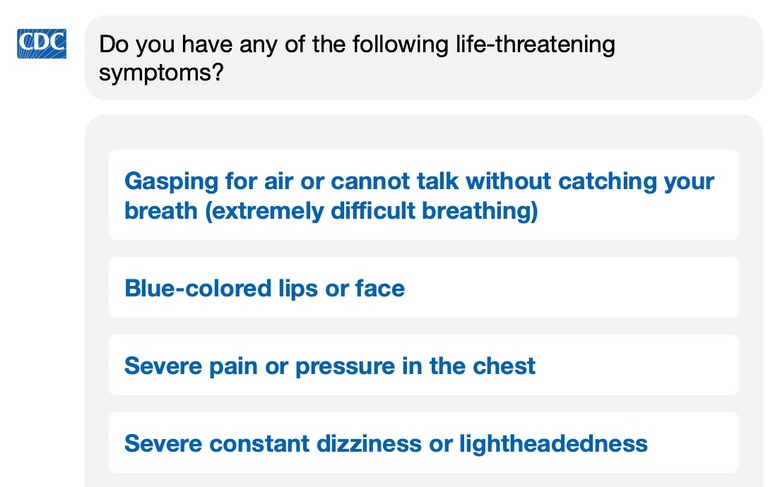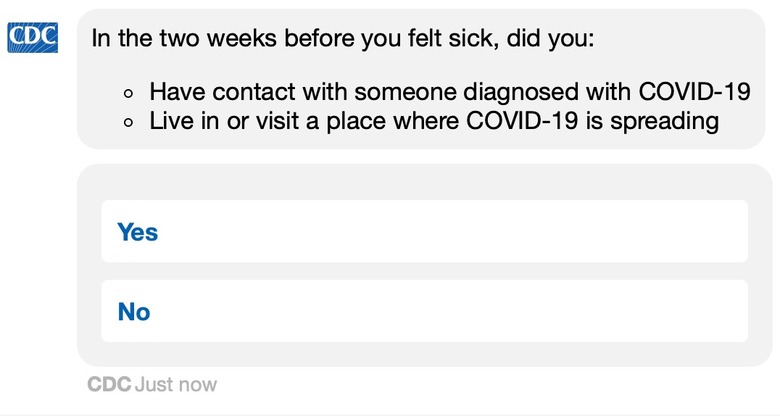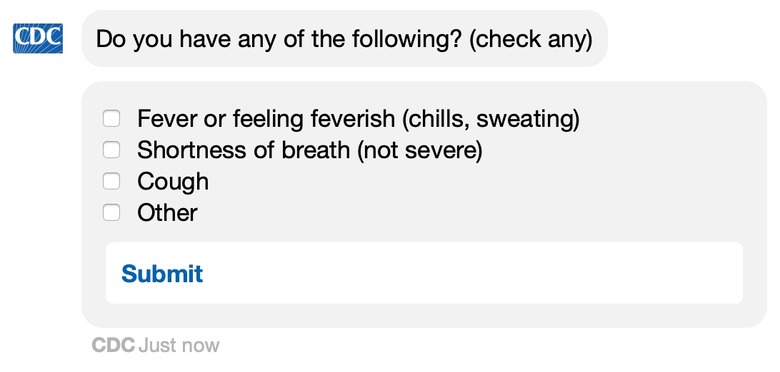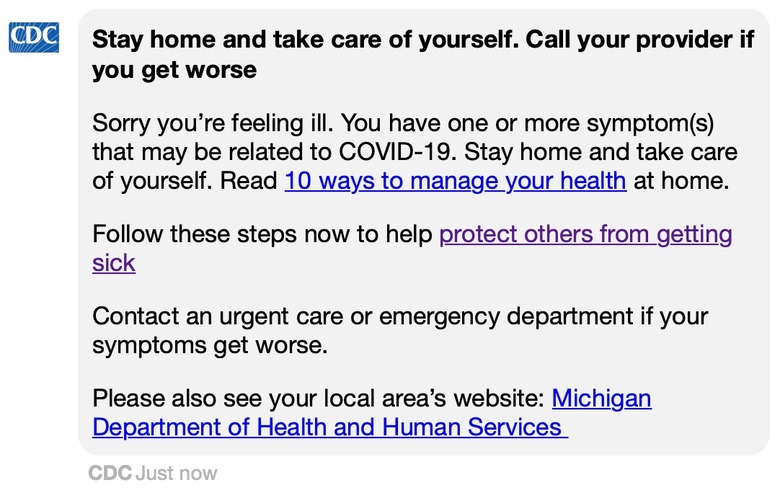CDC Coronavirus Self-Checker Launches To Assess Your Symptoms
The CDC has launched a coronavirus self-checker, allowing people who believe they may have been infected with COVID-19 to figure out the next steps in healthcare. The automated tool isn't designed to diagnose coronavirus, but could help triage potential new cases – as well as reassure those with atypical symptoms.
The test takes the form of a web-chat, and runs through a number of situations and symptoms. Initially, it checks for any life-threatening symptoms which might require immediate care, such as extreme difficulty creating, being unconscious or suffering a seizure, or severe chest pain.

After that, it goes through some of the symptoms we've become more familiar with from coronavirus warnings. That includes fever or feeling feverish, shortness of breath, and coughing. The CDC's tool also checks whether the person taking the test has been to a place where there has been a severe coronavirus outbreak, or in contact with someone with a known COVID-19 infection.

At the end, you get directed to either stay home and rest – monitoring your symptoms if they get worse – or directed to the next stage in primary care. Overall, the advice is basically in line with what we've seen doctors and other experts recommend, but completing the steps online may alleviate some of the load those services are currently experiencing. It's unclear whether the tool can actually guide a patient to a specific testing location.

"The purpose of the Coronavirus Self-Checker is to help you make decisions about seeking appropriate medical care," the Centers for Disease Control and Prevention says. "This system is not intended for the diagnosis or treatment of disease or other conditions, including COVID-19. This system is intended only for people who are currently located in the United States."

The launch comes as questions continue to circulate about the promised online diagnostic that President Trump announced a week ago. Speaking with the Vice President and several representatives from pharma companies and retailers like Walmart and CVS, Trump said that Google was building a website that would be able to triage possible coronavirus infections and send people to their nearest testing location. The President also said drive-thru testing was launching across the US, and promised that the web tool would launch last Sunday evening.
In reality, Alphabet's Verily confirmed later, the tool was far more conservative in its ambitions. Rather than covering the whole of the US, it was only designed to serve the San Francisco Bay Area. While broader availability was intended, Verily had no specific timeline for that to happen.
As for the drive-thru testing, the first CVS COVID-19 test site opened on March 19th. That was in Massachusetts, though availability is only for a small sub-group of people. As of Thursday, March 19, there were 10,442 confirmed coronavirus cases in the US, and 150 deaths, according to the CDC. Just over 40,000 people have been tested for the disease as of Thursday, the CDC says.
